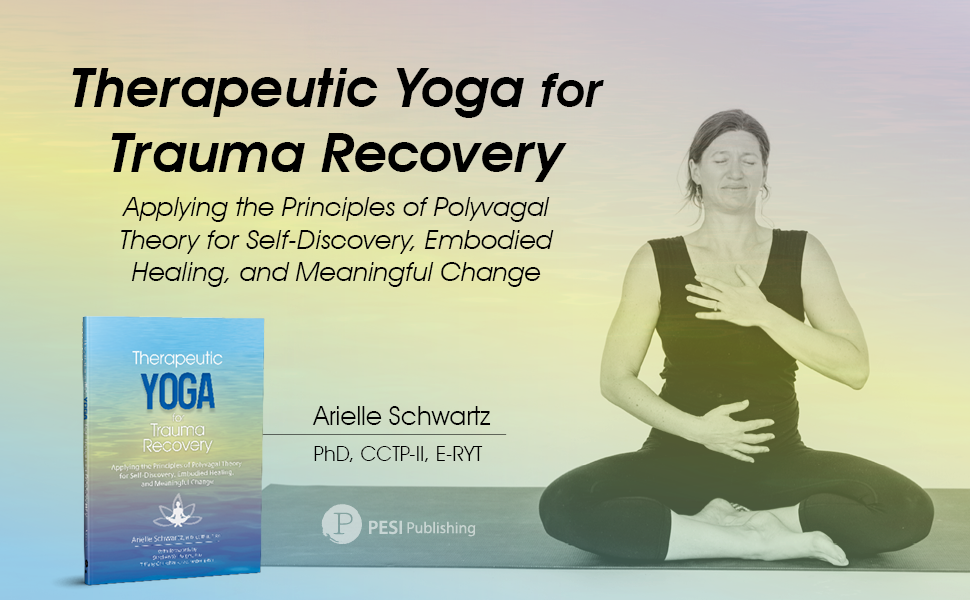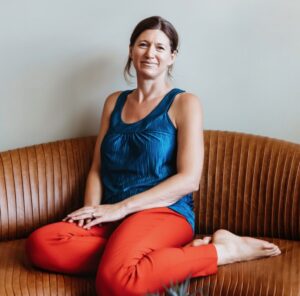When you sense and feel your body you are better able to take care of yourself. We are more likely to recognize if we feel hungry, thirsty, need to go to the bathroom, or need to rest when we are attuned to our sensations. Try it by taking a deep breath. Are you able to notice any areas of stiffness or discomfort in your body? Do you sense a desire to adjust your posture to better support your spine or to create a feeling of opening across your chest?
This may sound simple, but, truth be told, for many people it’s really not that easy…especially if you have a history of trauma or chronic pain. You might find it very difficult to tune into sensations. It might feel safer to avoid feeling your body because you never know when you might feel the next uncomfortable, aching, or burning sensation. Befriending the body takes time, especially if you feel as though your body has betrayed you. This post is one of a two-part series on attending to pain that guides you through tools to slowly, mindfully rebuild a connection to your body.
“If you have a history of trauma or chronic pain, you may need to relearn the art of listening to your body in a safe and slow manner. We begin by learning the role of the brain in pain, how trauma exacerbates chronic pain, and understanding the science behind why we need to move and breathe to heal.”
-Dr. Arielle Schwartz
Acute pain is initially sensed in the body through nociceptors, the sensory receptors at the end of sensory neurons specifically organized to send pain signals to the spinal cord and brain. These neuronal connections extend into the limbic centers of the brain which attribute an emotional quality to the pain.
Sometimes there is a physical cause of chronic pain such as a bulging disc, arthritis, or an infection. It is important to recognize that not all health challenges can be changed, no matter how hard you try. Here, you can focus on self-compassion, surrender, processing your grief about living with pain, and pain management.
However, scientists also recognize that pain, like all of our life experiences, becomes stored as a memory, a procedural memory to be more precise. Procedural memories involve brain centers that retain the sequence of motor skills and actions. Over time, these neuromuscular pathways of pain become reinforced through myelination (the fatty coating that strengthens neuronal connections). Examples of procedural memories include riding a bike or tying your shoe. Once a procedural memory is learned you no longer need to think about it; our neural networks continue to repeat them on autopilot. Importantly, procedural memories can be resistant to change. in other words, chronic pain can start in the body but be maintained by changes in brain activity.
Why would we want to remember pain? Because the body is wired for self-protection. It is a protective response to remember previous injuries…so that we can protect ourselves in the future if we face a similar threat. However, this “pain memory” can set off false alarms in which we interpret a threat when, in fact, there is no danger or if there is a minor concern the pain response is stronger or out of proportion with the situation. Healing chronic pain involves learning how to reclaim relaxation through breath and movement…and your “pain memory” may just hold the key.
Your pain is a connection to your past.
According to Mark Grant, author of Change your Brain, Change your Pain (2016), having a history of unresolved PTSD, especially childhood abuse, is associated with higher reports of chronic pain conditions including fibromyalgia. This may be linked to long-term holding of tension in your body to restrict vulnerable feelings. Holding muscular tension can help you avoid sensations…and as a result push away somatic reminders of a painful past. Or, if you live with chronic medical conditions, you may have had a history of unwanted or invasive medical interventions that have left scars on your soma and psyche.
Chronic pain can become a trauma that triggers a vicious cycle of more pain. If you have ever had a migraine or back pain you will know what I am talking about. The slightest feeling of a headache or a twinge in your back causes a fear response. How bad will it be this time? Will I end up in bed for days? Tension builds and you start to avoid anything that might trigger your symptoms. Your life starts to feel increasingly limited.
Sometimes, it can feel safer to not feel anything. But, numbness comes with a cost.
In response to any threat, real or perceived, we engage the sympathetic nervous system which releases cotisol to initiate a fight or flight response. This high arousal will bring forth changes in respiration, digestion, body temperature, blood pressure, and muscle tension. Ideally, we can allow this “energy” to move us and we can respond by shaking the body, conscious breathing, and moving the arms and legs. Movement helps your nervous system return to homeostasis, a state of relaxation and ease facilitated by the parasympathetic nervous system.
However, we live in a culture of stillness and many of us have learned to override our body’s natural impulses for movement. We suppress our sensations, emotions, and movement impulses. Suppression of movements inhibits our ability to resolve the nervous system activation into homeostasis and interferes with our ability to access the parasympathetic relaxation response. As a result, our muscles retain low levels of incomplete movements in the form of passive tension that is held without conscious awareness.
Alan Fogel, author of the book, Body Sense (2009) identifies that long-term suppression of movement impulses has consequences on health such as chronic pain, higher levels of cardiovascular disease, higher blood pressure, higher rates of gastrointestinal diseases, respiratory diseases such as asthma, and serious autoimmune disorders. In short, when we suppress movement impulses we impede our capacity for natural healing. What we cannot feel, we cannot heal.

From a somatic therapy perspective, healing involves developing tolerance for sensations and reclaiming healing movements or movement sequences. We increase sensory awareness by developing a capacity to stay with painful emotions and sensations without judgment. Fogel calls pain your body’s “wake-up call.” I invite you to think of pain as an opportunity to reclaim healing movement impulses that were suppressed (sometimes many years ago).
Lack of movement, emotional stress, physical injury and historical trauma can lead to the stickiness or hardening of fascia. Fascia, also known as connective tissue, is a fibrous web that extends into every structure and system of your body. Fascia plays a key role in transmitting hormones (e.g. adrenaline, estrogen, insulin, thyroid hormones, oxytocin) and neurotransmitters (e.g. serotonin, dopamine, GABA, acetylcholine) throughout your body. Thus we see that fascia is deeply intertwined with the nervous system, endocrine system, and immune system.
Overtime, the hardening of the fascia can build up and is associated with vicious cycles of chronic pain, systemic inflammation, histamine intolerance, fibromyalgia, and chronic fatigue syndrome (myalgic encephalomyelitis). The good news is that mindful movement, deep breathing, and massage all help to melt the fuzz and rehydrate your fascia…Read more in part-two on how therapeutic yoga can help you find relief from chronic pain.

This book introduces you to the power of the yogic philosophy and offers a variety of accessible yoga poses and breathing practices that will allow you to:

Arielle Schwartz, PhD, is a psychologist, internationally sought-out teacher, yoga instructor, and leading voice in the healing of PTSD and complex trauma. She is the author of five books, including The Complex PTSD Workbook, EMDR Therapy and Somatic Psychology, and The Post Traumatic Growth Guidebook.
Dr. Schwartz is an accomplished teacher who guides therapists in the application of EMDR, somatic psychology, parts work therapy, and mindfulness-based interventions for the treatment of trauma and complex PTSD. She guides you through a personal journey of healing in her Sounds True audio program, Trauma Recovery.
She has a depth of understanding, passion, kindness, compassion, joy, and a succinct way of speaking about very complex topics. She is the founder of the Center for Resilience Informed Therapy in Boulder, Colorado where she maintains a private practice providing psychotherapy, supervision, and consultation. Dr. Schwartz believes that that the journey of trauma recovery is an awakening of the spiritual heart.

Arielle Schwartz, PhD, is a psychologist, internationally sought-out teacher, yoga instructor, and leading voice in the healing of PTSD and complex trauma. She is the author of five books, including The Complex PTSD Workbook, EMDR Therapy and Somatic Psychology, and The Post Traumatic Growth Guidebook.
Dr. Schwartz is an accomplished teacher who guides therapists in the application of EMDR, somatic psychology, parts work therapy, and mindfulness-based interventions for the treatment of trauma and complex PTSD. She guides you through a personal journey of healing in her Sounds True audio program, Trauma Recovery.
She has a depth of understanding, passion, kindness, compassion, joy, and a succinct way of speaking about very complex topics. She is the founder of the Center for Resilience Informed Therapy in Boulder, Colorado where she maintains a private practice providing psychotherapy, supervision, and consultation. Dr. Schwartz believes that that the journey of trauma recovery is an awakening of the spiritual heart.